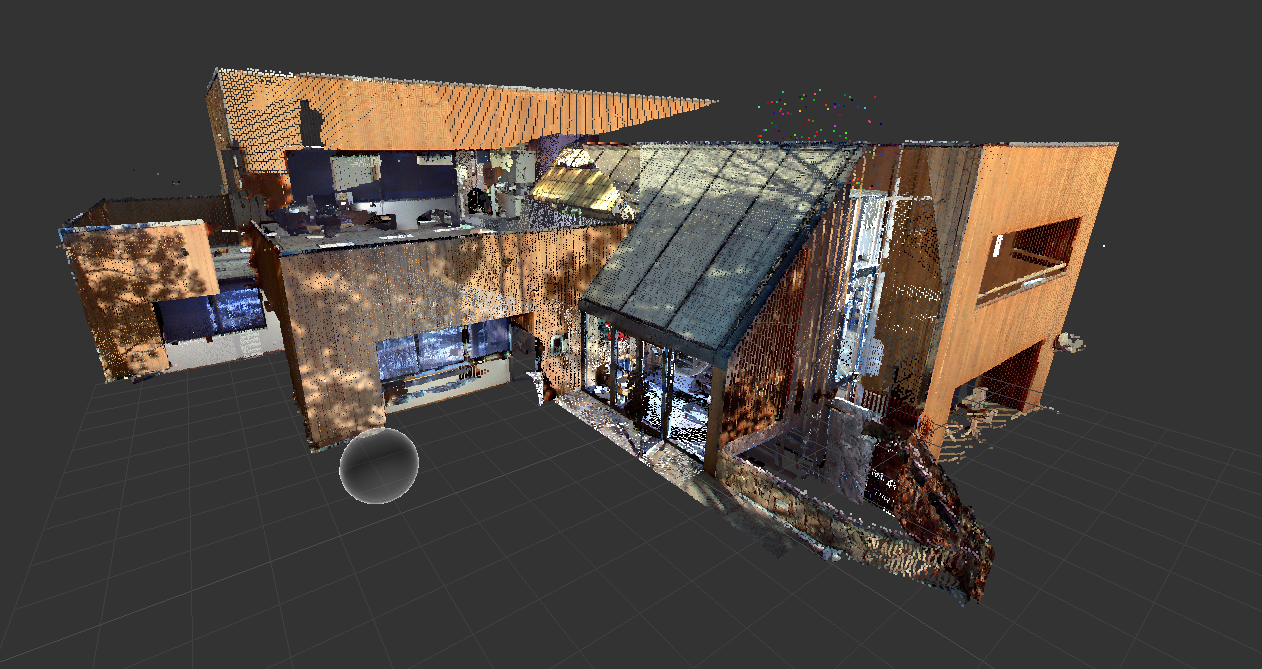Geo Positions: Architecture on a Budget with BIM
Pushing boundaries and exploring new ways of doing things to optimize efficiencies is what Matt Zwetzig most enjoys about his role as director of virtual design and construction at Vega Architecture. The architectural firm, based in Denver, has done work in at least 19 states to date. Zwetzig has spent a total of nine years in the Architecture, Engineering and Construction -AEC - industry, six of them working with Building Information Modeling - BIM - in some capacity.
Zwetzig’s role at Vega mainly encompasses model-based estimating and integrating that with target Value Design - TVD. After working in the construction side of the industry, he realized there was a need to implement better cost estimating earlier in a project’s life. He says shifting to the design side made sense because it has a high level of control with regard to overall project cost. Using model-based estimating to design to a client’s target budget throughout the design stage allows his team to be respectful of the client’s pocket book and maximize the value of the project through thoughtful design and material selections.
Building lifecycle cost analysis also plays a part in the design stages, Zwetzig says, because the vast majority of building-related expenses to a property owner are in the operations and maintenance of the building. Choosing materials that not only meet the budget requirements, but provide the best options for longevity and desired aesthetics, is key to the process.
“Vega Architecture’s goal using this approach is to design to the client-provided budget, maximize the building value to the owner, and provide a completed design that meets the owner’s vision,” he says.
In order to achieve that goal, he uses BIM to extract construction quantities and apply cost values to designs. This process is made much more efficient through the use of the 3D models and related BIM software packages. Using the models they produce at every design stage, the Vega team can rapidly extract the quantities necessary to produce an estimate. “For most projects, we can produce an estimate update in a matter of hours, compared to the traditional process of manual quantification, which would take days or weeks. Without the use of BIM in our estimating process, we would constantly be behind our design teams, and that wouldn’t allow us to provide the relevant feedback for how their current design meets budget requirements.
”Using BIM to estimate allows Zwetzig to provide early and accurate cost estimates that are relative to the current design. He says that feedback ultimately reduces the time spent on design corrections to maintain the target budget. Looking back at his aspirations and comparing them to what he does now, he says it’s not quite what he had mind for a profession back then.
“However, I wouldn’t change it a bit; and I'm looking forward to what lies ahead.”
Q. What do you do for a living?
A. I create and manage Virtual Design and Construction - VDC - processes and services for Vega Architecture. This includes the model-based estimating and target value design approach, as well as exploring new ways to make our design teams work more efficiently and effectively to achieve our company goals without sacrificing the quality of design and service our clients are used to and expect.
Q. What is your favorite tool to work with?
A. Currently, I have a few tools that I prefer. At Vega we design with ArchiCAD and it has really exciting software coupled with it called BIMx. This allows our designs to be viewed in 2D and 3D, as well as hybrid 2D/3D views seamlessly on tablets in the field. When construction crews have the ability to have the most up-to-date version of construction documents in conjunction with interactive 3D information, it empowers the construction teams to achieve more.I also seem to not be able to pull myself away from the 3D laser scanning devices and software. To me, it is a vital tool for renovation/expansion projects, as well as as-built construction verification and progress reporting.Finally, the tool that lets me get the majority of my work done with regard to model-based estimating and design change analysis is Vico Office by Trimble. I use this on a daily basis to analyze the models our designers produce for scope changes and quantification. It also allows me to do the cost estimating and target value design analysis. Vico Office has been one of my daily used programs for over five years now. I’ve gotten to the point where a large portion of my workflow is automated in this program, which frees me up to focus on the important things that matter and work efficiently.
Q. What is the toughest challenge you face?
A. So far in my career, the toughest challenge is culture shift in the industry. Many are leery to the new tech and processes that are coming from adopting new tech. One of the biggest responses I get is, “Why do we need to change if we have been doing it one way for so long?” The answer to that is generally subjective for most, but I’ve seen enough reasons why the traditional way is causing many of the issues and wasteful practices we see in the construction industry. My response to the question is that we need to adapt because others will if we don’t. I’d rather be the one disrupting the competition than be disrupted.
Q. What is the biggest lesson you’ve learned?
A. Be patient. New technology tends to not live up to the expectations at first, but given time it will begin to. This also applies to people when it comes to change and new process adoption. Through many projects and hurdles along the way, I’ve learned that if you show people the end goal and then show them the why and how to get to that goal, the team eventually strives to reach that goal. Setting the goal in the first place is just as important as the follow-through and implementation. Along the way, and at the end of any process, continuous improvement is critical to learning from the mistakes as well as the successes. In order to continue achieving goals, it’s also very important to celebrate the successes, no matter how small.
Q. What advancements would you like to see made?
A. I’ve seen the BIM industry segment explode in development over the last several years, and it’s still in its infancy stage. I expect to see advancements in the next several years that will just blow my mind. I am most excited about and anticipating implementation of intelligent digital assistants in the BIM tools, whether this is an automated and real-time code compliance engine for designers or a tool that predicts what type of space they are working on and prompts the user with pre-optimized layouts for the size and shape of the space. The list goes on and on, but now that we are starting to see the software connected to the cloud and machine learning algorithms, I don’t think it is that far off in the future and the possibilities are near limitless.
Q. What are your keys to success?
A. Plan your work and work the plan, adapting as needed along the way. This work can be extremely stressful at times, so it’s important to celebrate your accomplishments and accept the fact that you’ll eventually look back at yourself on occasion and have a good laugh.



